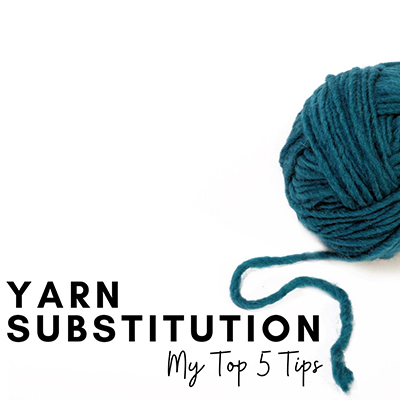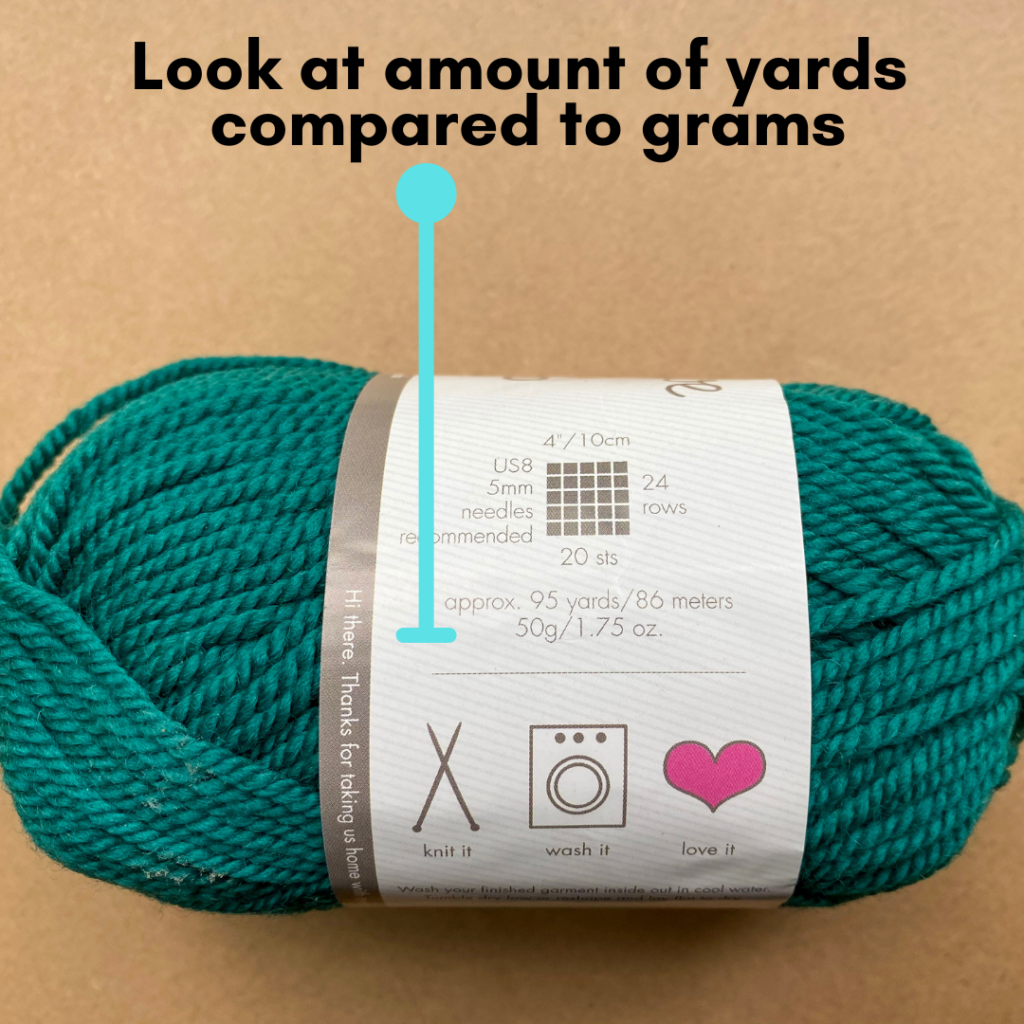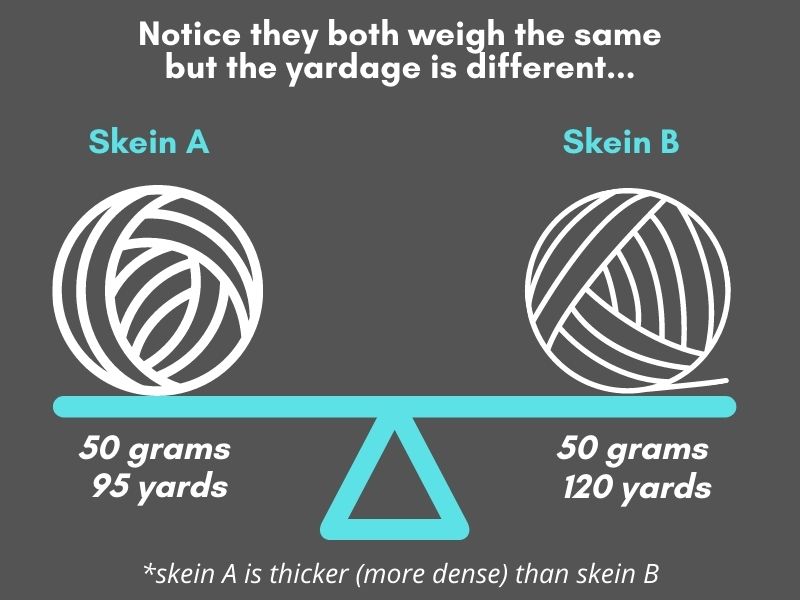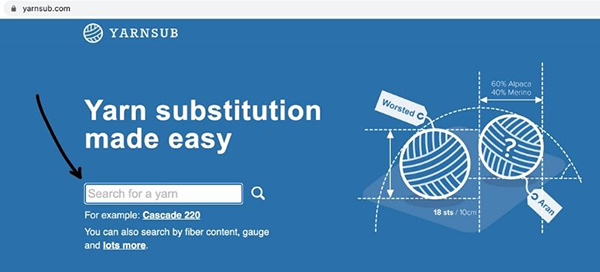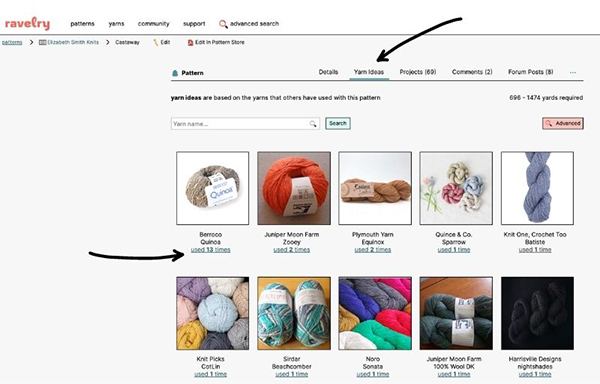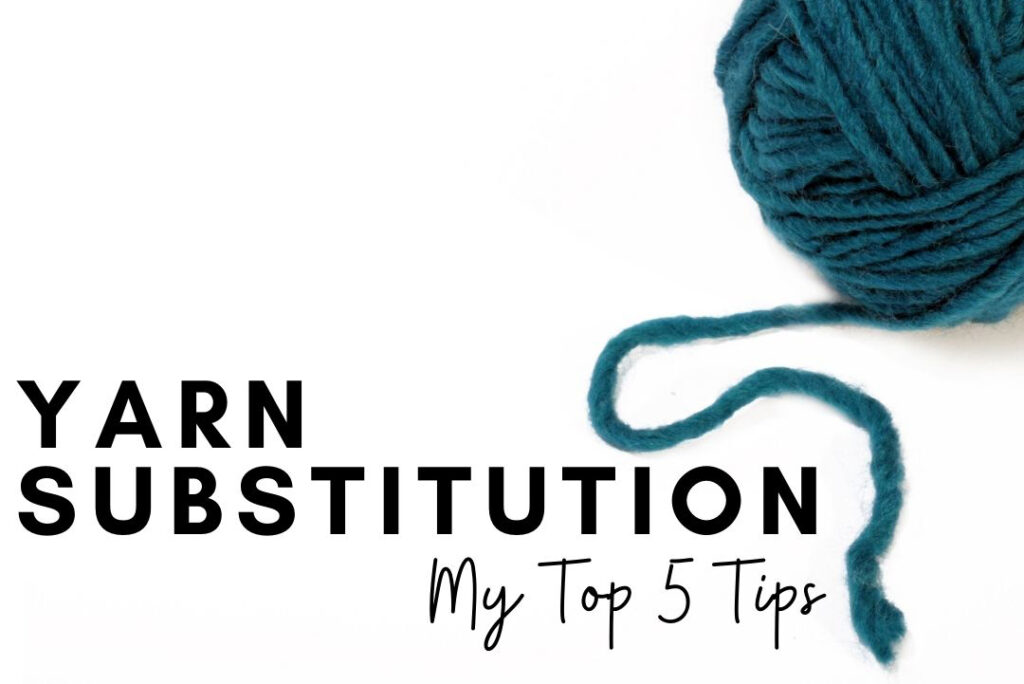
Having worked in a yarn shop (as well as just being an avid knitter for a while now), I have learned A LOT about yarn substitution! The term “yarn substitution” is used when you pick a yarn that is different than the one suggested in the pattern. There are lots of reasons people substitute yarn. Price point, availability of the suggested yarn, fiber content issues (i.e, you’re allergic to the fiber in the suggested yarn) or just wanting to use up stash yarn instead of buying new – these are all common reasons people want to substitute yarn. But, how do you know what yarns might be good substitution options? Below are my 5 tips!
Tip #1: Match the weight classification
Yarn weight is super important in substitution. Yarns are classified into these difference weights (listed in order from thinnest to thickest): lace, fingering, sport, dk, worsted/aran, chunky/bulky, super bulky (see chart below):
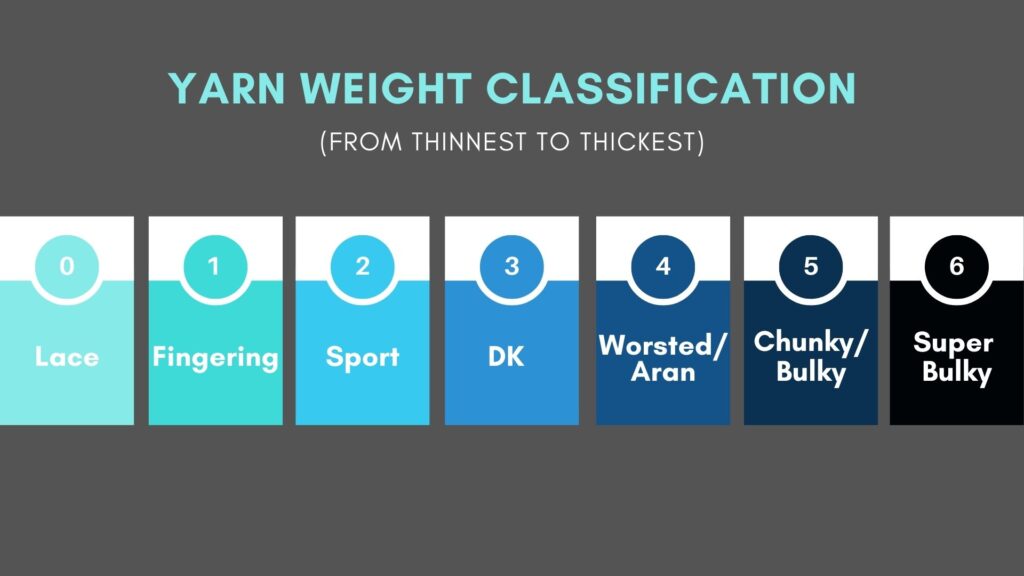
So if the yarn suggested is classified as a worsted, your substitute should also be classified as worsted. In all of my patterns, in the “Yarn” section, I always say what yarn weight you should use but if you encounter a different pattern that doesn’t, you can look the yarn up on Ravelry, check the yarn company’s website or Google it and find an online seller – the yarn’s weight classification will often be listed on the product page. However, one thing to keep in mind is that it’s the yarn companies who classify each yarn and they may decide to list a yarn as, say, “DK” but it may actually knit up closer to “Worsted.” Additionally, sometimes companies or websites will combine sport/DK together (because they are similar). And, sometimes they include a classification of “aran-weight” (which is a weight in-between worsted and bulky) and sometimes they don’t and instead combine worsted/aran together. So as you can see, weight classification isn’t always consistent from company to company or website to website – this is why tip #2 is important and should be used along with tip #1…
Tip #2: Check the yards/grams
This was a big tip I learned from my days working at a yarn shop. Just because two yarns are both classified as, say, worsted-weight, doesn’t mean they are the same kind of worsted-weight. Some worsted-weights are thinner and can be considered “light worsted” and other worsted-weights are thicker and can be considered “heavy worsted”. So even within a weight classification, there’s a range from light to heavy (or thiner to thicker). It doesn’t mean that you can’t substitute a light-worsted for a heavy-worsted but it’s good to know because it can affect how the fabric will feel/drape at the pattern gauge.
So how do compare two worsted-weight yarns to see if they are similar on this spectrum? Look at the weight (usually a skein is 50g or 100g) and compare it to the yardage.
If you’re comparing 2 different types of worsted-weight yarns (and they are both of similar fiber content), and both are 50g but yarn A has 95 yds in it (as my example above of Ewe Ewe Yarn’s Wooly Worsted and yarn B has 120 yds, that means that yarn A is a bit heavier than yarn B.
Sometimes this can be confusing because in our head it might sound funny that something with less yardage would be heavier. But here’s another way to look at it: If both skeins weigh the same, but skein A has 25 less yards in it than skein B, then skein A’s yarn must be more dense (i.e, heavier) in order for less of it to weight the same as skein B. Typically I like to find substitutes that are within 20-25 yds or so of the suggested yarn. It doesn’t mean you can’t use yarns that are more than this but it means that it will more likely have a different fabric consistency. Note: different types of fiber content can also impact the yardage per gram, so check out tip #3…
Tip #3: Keep fiber content in mind
Fiber content can make a very big impact on whether or not your yarn substitution will match up well to the suggested yarn. Fiber content will determine how your knitted piece drapes, so if you want a similar drape to the sample you see in the pattern, it’s best to try to substitute with a yarn of similar fiber type or fiber blends. For example, my design Castaway uses Berroco Quinoa, a cotton/nylon blend yarn – if you want your version to have a similar drape and look, then it would be a good idea to use a yarn that also has mostly cotton or some other plant-based fiber. You could use, say, a superwash merino instead, but it will not drape in quite the same way. However, with all that said, keep in mind that sometimes a different fiber type can give surprisingly good results too! Let’s say you want to knit my Alanis but you live in a warm climate so a wool/alpaca blend would not be very wearable. Then picking a yarn that was a wool/linen or wool/cotton blend instead might be a better option.
Tip #4: Also consider a yarn’s texture or variegation
Texture can play a big role in making your yarn substitution decision. For example, in my Brassica pullover, I have a column of slipped stitches going down the front. It looks great in the Berroco Ultra Alpaca as shown below because this yarn has a pretty smooth look to it. However, if you were to use a highly textured yarn, the stitch definition wouldn’t be as defined and those columns of slipped stitches might become totally lost.
Similarly, using a highly variegated yarn in a pattern like this might also impact how much these slipped stitches will “pop.” So if the pattern has stitch definition details or lace pattern work in it, definitely consider the yarn’s texture and/or variegation and how it might impact those stitch patterns.
Tip #5: Utilize online (and offline) resources
There are some great resources that can be super helpful when you’re needing to substitute yarn. Below are a few that I often recommend:
This site is very easy to use and can help give you some ideas for yarns that are similar to your pattern’s suggested yarn. Just type in the yarn you are trying to substitute for in the search box and then a list of possible alternatives will display, along with explanations of how each option is similar (or dissimilar) from the original.
One of the lesser known but helpful functionalities of Ravelry is the “Yarn Ideas” tab that is included on every pattern page. For example, if you look at my Castaway pattern page and click on the “Yarn Ideas” tab, you’ll see a list of all of the yarns that others have used for this pattern. This can often inspire some ideas, and the other great part is you can see finished projects made with these yarn alternatives just by clicking on the “used x amount of times” link under each yarn’s image.
Your local yarnshop:
Your local yarn shop is one of the best resources for yarn substitution. They are professionals at it! So when in doubt, support your LYS and let them help you pick out a yarn that will make a great substitution for your next project.
I hope some of the yarn substitution tips have been helpful! If you ever need suggestions or advice on this topic for any of my designs, feel free to reach out.

